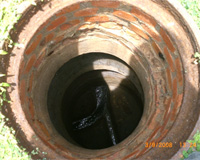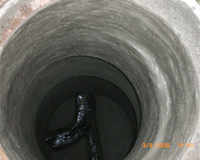Manhole Rehabilitation
Manholes are underground chambers to provide man-entry access to maintain utility pipelines. They usually are subjected to underground corrosive environments and traffic loads which accelerates the degradation process of these structures. As they are underground and out of general sight, degradation of these structures are not usually monitored unless a collapse occurs then the damaged is noticed.
With the advancement of pipeline rehabilitation techniques and technologies, defects and problems in manholes are now receiving increasing attention. Engineers and municipals worldwide have realised the benefits of rehabilitation repairs to manholes. As leaks which are prevented from relined pipes are only re-directed to the next weakest part of the system which are usually the manholes. As manhole rehabilitation is an integral part of the whole pipeline rehabilitation process, neglecting it and only concentrating on the pipe, just shifts the problem and defeats the rehabilitation process. The good thing is that manholes investigation is usually the easiest and the least costly to repair. The restoration of these manholes is done in less time that it would take to replace them and for a fraction of the cost. It can be carried out within two to three hours without much disruption to above ground activities and environment. By rehabilitation of these manholes, Cities are able to prolong the lifespan of the structures hence saving cost.
The Process
- The interior surface has to been clean thoroughly with a high pressure water jet to ensure that no dirt or grim has been left on the surfaces.
- Any infiltrations has to be stopped either with PU injection or high strength water stops.
- The highly sulphuric resistant cementious mortar is then sprayed from top down with multiple passes to achieve a thickness of 10-20mm. When the specified thickness has been achieved the interior surfaces are then trowel or brushed, to give the surfaces a smooth finish.
- The textured mortar is then left to cure to provide an interlocking surface to form an impermeable barrier against future corrosion.

-
- Before Manhole Rehabilitation

-
- After Manhole Rehabilitation
- Advantages
-
- Prevents Infiltration and Infiltration
- Structurally reinforces to prolong usage
- Flows maintained during procedure
- Clean operation as no excavation / digging is required
- Cures quickly at high strengths for a speedy return to service
- Can be done within 2-3 hours hence minimizing above ground disruptions


